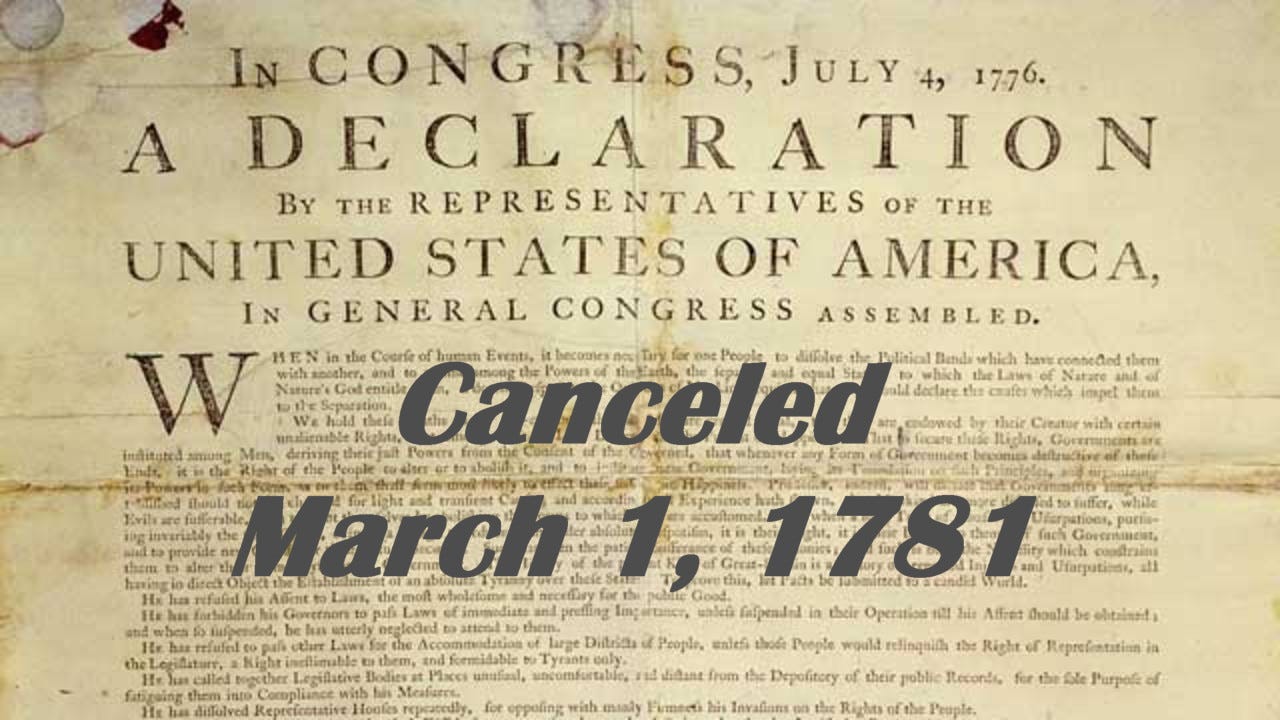The Theory and Meaning of America, Part 5
The Case that the Declaration of Independence Pertained to a Nation Long Extinct
In the last installment in this series, The Theory and Meaning of America, we learned that in America there is a burgeoning school of contemporary legal thinking, one which holds that the Declaration of Independence is no longer valid, and is merely an historical document once written to declare independence for a nation that no longer exists, and has not existed since 1781. We learned that, within the contemporary constitutional law community in the United States, this opinion is mainstream and is one held by highly esteemed professors in major law schools, schools such as Yale University. We learned that one such professor is Akhil Reed Amar, awarded as Yale's Sterling Professor of Law in 2008, and who has had work cited by the US Supreme Court dozens of times including the landmark decision which declared the line-item veto unconstitutional. So Professor Amar is considered an esteemed legal thinker by those who should understand what legal thinking is.
In his book, America's Constitution: A Biography, Professor Amar contends that under the terms of the Declaration of Independence, the "United States of America" came into being as a sovereign nation, complete with a requisite source of national sovereign authority. However, Professor Amar then also holds that once the states ratified the Articles of Confederation on March 1, 1781, that nation which came to be in 1776 no longer held its status as a "nation." Instead, according to Professor Amar, at that very moment the United States of America became, as he describes, a "multi-lateral treaty regime, as opposed to a truly national regime founded on a truly national people." So if the professor is correct in both of these counts, a "nation," once known as the United States of America, which nation came into being in 1776 with the signing of the Declaration of Independence, became extinct once the states ratified the Articles of Confederation in 1781. And at that very moment, birthed a new organization he refers as a multi-lateral treaty regime, an organization which just happened to bear the same name as the former but newly extinct nation. Professor Amar's writing is unclear regarding whether the multi-lateral treaty regime was itself once this then extinct nation, and that the extinct nation somehow morphed to become the multi-lateral treaty regime, somewhat as Darwin might conceive, or if the extinct nation simply disintegrated into nothing and the multi-lateral treaty regime arose from the darkness, created by the stroke of a last signature. But for the sake of this discussion, clarifying that point really won't matter.
Accordingly, subsequently in 1789, as the states ratified the Constitution, in somewhat reverse fashion, a new and different nation, one that had never existed before, came into being, however once again, almost by coincidence, bearing the same name as the nation previously born under the Declaration of Independence, and the same name as the multi-lateral treaty regime which previously morphed from that original but now extinct nation, (or otherwise arose from the abyss), under the Articles of Confederation. Simultaneous to the beginning of this new and different nation in 1789, referred in all three documents as "the United States of America", this multi-lateral treaty regime became expunged, we can suppose either by a process of 'reverse morphing' or perhaps descending once again into the abyss from whence it had originally arisen.
So to be clear, if what Professor Amar suggests is true, then between the years 1781-1789, there existed no nation on earth known as the "United States of America," only a multi-lateral treaty regime by the same name. In summary, all this means is that in 1781 a nation known as the "United States of America," which arose into existence in 1776, morphed into the "United States of America," a multi-lateral treaty regime, and subsequently in 1789 morphed into a new and different nation than the one that existed between 1776 and 1781, a nation that had never existed before, all the while however, each of these organizations bearing the same name. And as a result, when the Constitution was ratified in 1789, the multi-lateral treaty regime known as the "United States of America" died the death of a un-adjudicated violated treaty....
Now I ask, reasonably, is what I describe above really what the Founders and early authorized congresses envisioned? Is what I describe that which you, the reader, ever imagined in your wildest dreams? Each year on July 4th do Americans celebrate the independence of a nation that no longer exists??? If what Professor Amar and other similar-minded legal thinkers who agree with him say is true, then why is it so important that the United States National Archives spend so much of our precious resources to preserve and protect the original Declaration of Independence and Articles of Confederation, documents which no longer apply to our present nation? Why would they not simply walk them across the street to the Smithsonian Museum and place them in a display alongside other extinct dinosaurs?
In the next installment in this series, we will begin to uncover the layers of errors in Professor Amar's esteemed thinking, and we will use the source documents under consideration as our evidence. In the process we will discover the reason constitutional scholars such as Professor Amar believe it is important to make the case such as the one he attempts in his book, subverting the very meaning of those documents.
And just a personal note here: I appreciate the time it takes to fully understand what I am writing in this series. The material I cover here did not come without lengthy consideration on my part either. You are reading the American History that your high school text books never covered. I thank the reader for considering my remarks and pledge that it will be worth it to stay until the series is complete.
-Hank




